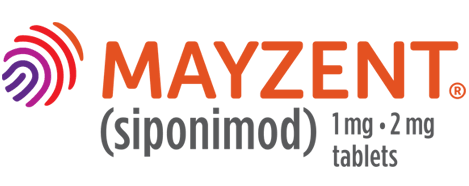HOW TO GET PATIENTS STARTED ON MAYZENT®

Alongside™ is committed to providing information and support, so you and your patients have clarity and know what to expect.

Alongside™ is committed to providing information and support, so you and your patients have clarity and know what to expect.

START YOUR PATIENTS IN JUST 2 STEPS
STEP 1: CONDUCT ASSESSMENTS
START YOUR PATIENTS IN JUST 2 STEPS
STEP 1: CONDUCT ASSESSMENTS
-
Screen patients to clear for therapy. Assessments are not obtainable through Alongside MAYZENT
-
Commercially insured patients can get reimbursed for initial assessments for up to $900 after paying a $125 deductible




-
Screen patients to clear for therapy. Assessments are not obtainable through Alongside MAYZENT
-
Commercially insured patients can get reimbursed for initial assessments for up to $900 after paying a $125 deductible





STEP 2: INITIATE TREATMENT
STEP 2: INITIATE TREATMENT
Start and help patients stay on track with treatment§
Once genotype results are available, you will determine your patient’s maintenance dose. Then, treatment with MAYZENT can begin immediately for all commercially insured and approved government-insured patients. Alongside MAYZENT offers:
-
FDO may be needed for patients with pre-existing cardiac conditions (most patients will not require an FDO)1,2
-
Ongoing one-on-one patient assistance from dedicated Coordinators
-
Technology to help patients stay on track during initiation and throughout treatment
-
The MAYZENT Welcome Kit, information patients may need to start and stay on treatment


STEP 2: TREATMENT INITIATION
Start and help patients stay on track with treatment§
Once genotype results are available, you will determine your patient’s maintenance dose. Then, treatment with MAYZENT can begin immediately for all commercially insured and approved government-insured patients. Alongside MAYZENT offers:
-
FDO may be needed for patients with pre-existing cardiac conditions (most patients will not require an FDO)1,2
-
Ongoing one-on-one patient assistance from dedicated Coordinators
-
Technology to help patients stay on track during initiation and throughout treatment
-
The MAYZENT Welcome Kit, information patients may need to start and stay on treatment



BROAD COVERAGE WITH MAYZENT3
For all commercially insured and government-insured patients:
Approximately
87 % ofpatient reimbursement claims
are being approved3¶
In case of approval challenges, Novartis is able to support commercially insured patients as they start on MAYZENT with a free bridge supply until commercial insurance coverage is approved. Alongside MAYZENT can also refer eligible patients to the Novartis Patient Assistance Foundation.

BROAD COVERAGE WITH MAYZENT3
BROAD COVERAGE WITH MAYZENT3
For all commercially insured and government-insured patients:
87 % of
patient reimbursement claims
are being approved3¶
In case of approval challenges, Novartis is able to support commercially insured patients as they start on MAYZENT with a free bridge supply until commercial insurance coverage is approved. Alongside MAYZENT can also refer eligible patients to the Novartis Patient Assistance Foundation.

ADDITIONAL PATIENT SUPPORT WITH ALONGSIDE MAYZENT
Alongside MAYZENT provides patients with access & financial support options, as well as additional tools, resources, and services to help them stay on track.
Strong access for commercially insured patients
-
Dedicated reimbursement support
-
Financial support information
-
For commercially insured patients, the Bridge Program covers all drug costs while coverage is pursued for up to 1 year
-
Patient adherence support
-
$0 Rx co-pay and additional medical co-pay support for commercially insured patients#
-
Technology to help patients stay on track during initiation and throughout treatment
Strong access for commercially insured patients
-
Dedicated reimbursement support
-
Financial support information
-
For commercially insured patients, the Bridge Program covers all drug costs while coverage is pursued for up to 1 year
-
Patient adherence support
-
$0 Rx co-pay and additional medical co-pay support for commercially insured patients#
-
Technology to help patients stay on track during initiation and throughout treatment
GOING DIRECTLY THROUGH A SPECIALTY PHARMACY?
Your patients can enroll at start.mayzent.com for help with treatment initiation, ongoing one-on-one assistance from dedicated Coordinators, and access and reimbursement support
GOING DIRECTLY THROUGH A SPECIALTY PHARMACY?
Your patients can enroll at start.mayzent.com for help with treatment initiation, ongoing one-on-one assistance from dedicated Coordinators, and access and reimbursement support
RESOURCES AND TOOLS FOR YOUR ENROLLED PATIENTS
-
1-877-MAYZENT (1-877-629-9368) Helpline available 8AM to 8PM Monday through Friday
-
Dedicated one-on-one support for up to 2 years
-
Additional program-provided educational and adherence support content
-
Phone, text, and e-mail reminders
Novartis Access Reimbursement Managers (ARMs) and Case Managers are available to provide dedicated, in-office access and reimbursement support.
Novartis Alongside MAYZENT Coordinators help optimize your patient’s experience by delivering efficient patient initiation, including coordination and scheduling support.
GET PATIENTS STARTED ON MAYZENT®
MOA, mechanism of action; MOD, mechanism of disease; RMS, relapsing multiple sclerosis.
*A CYP2C9 genotype blood test that is processed through Labcorp is available at no cost. the cost of the genotype blood test may not be billed to any third -party payer. If your HCP does not submit for reimbursement of this test, commercially insured patients can submit a Medical Claim Reimbursement Request Form to IQVIA to get reimbursed for initial assessments and first dose observation (FDO) for up to $900, after a $125 deductible. Limitations may apply. Offer not valid for services (|) performed in RI, (||) for which payment may be made in whole or in part under federal or state health care programs, including , but not limited to, Medicare or Medicaid, or (|||) where prohibited by law. There is a cash-pay option for residents of RI. No purchase required. Program subject to termination or modification at any time. For questions regarding covered services, please contact your Alongside Coordinator.
†Any suspicious skin lesion observed should be promptly evaluated prior or shortly after initiation.
‡A CYP2C9 genotype blood test that is processed through Labcorp is available at no cost. The blood test is available at no cost to any patient who is being considered for treatment with MAYZENT. Limitations may apply.
§Once appropriate maintenance dose has been determined based on genotype results.
||As of March 2022.
¶As of August 2021.
#Limitations apply. Up to an $18000 annual limit. Offer not valid under Medicare, Medicaid, or any other federal or state program. Novartis reserves the right to rescind, revoke, or amend this program without notice. See complete Terms & Conditions for details at www.mayzent.com.
References: 1. Data on file. Mayzent FDO Analysis. Novartis Pharmaceuticals Corp; March 2022. 2. Mayzent [prescribing information]. East Hanover, NJ: Novartis Pharmaceuticals Corp. 3. Data on file. Mayzent Approval Rate Analysis. Novartis Pharmaceuticals Corp; August 2021.










